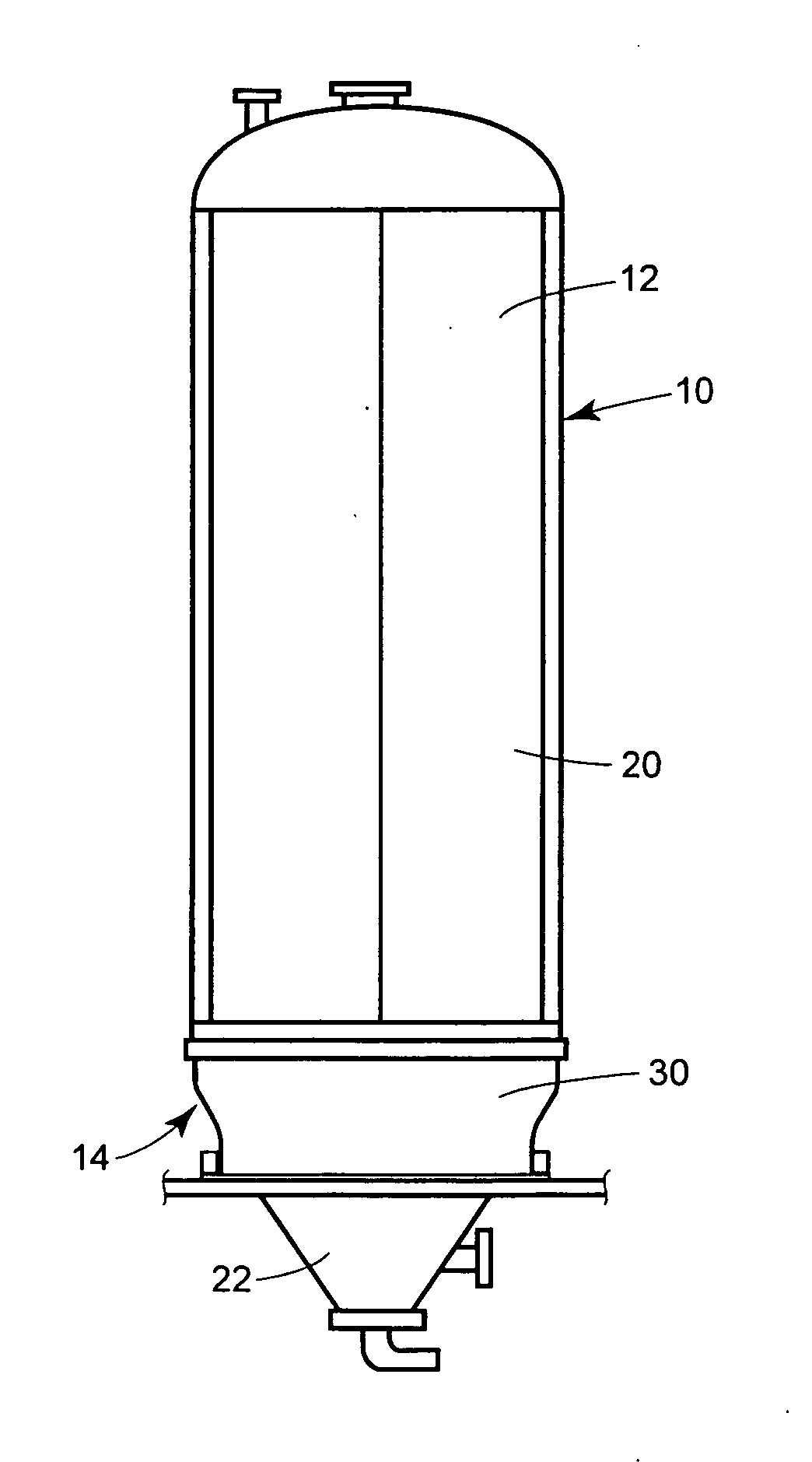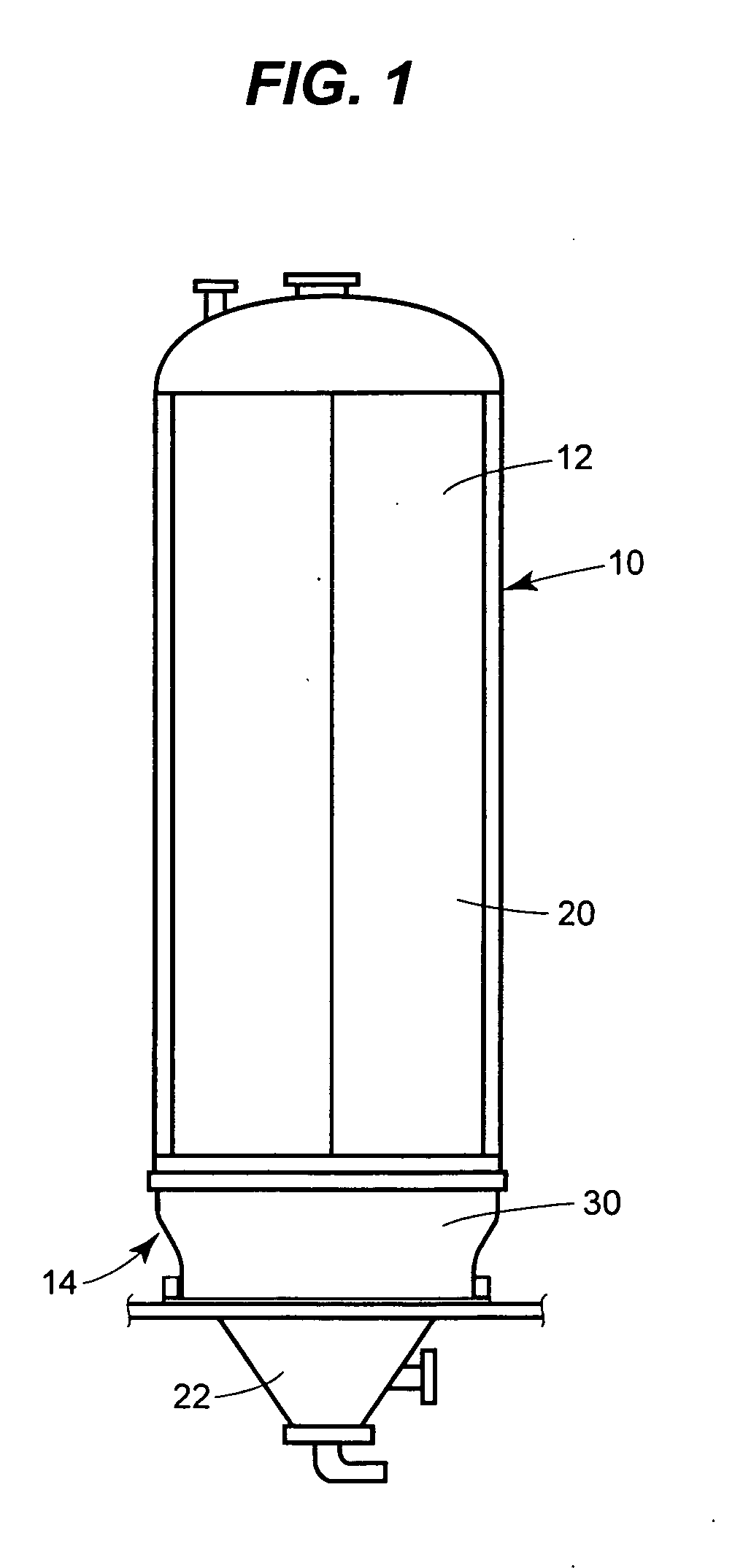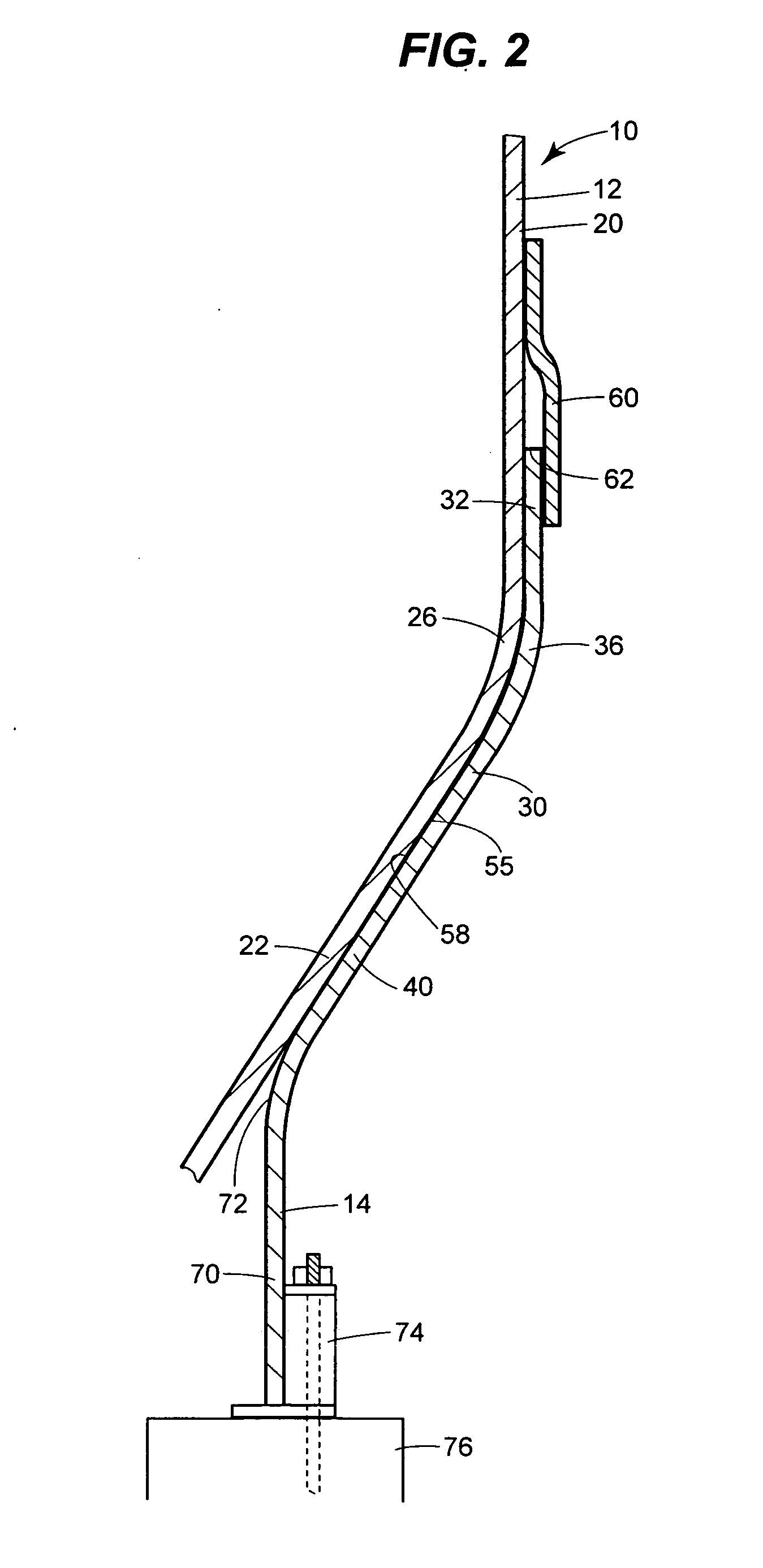Structure for extreme thermal cycling
a technology of extreme thermal cycling and structures, applied in the direction of charging-discharging device combinations, container discharging methods, separation processes, etc., can solve the problems of deterioration of structures structural failure, vessel wall cracking, etc., to reduce fatigue, reduce welding amount, the effect of flexible connection
- Summary
- Abstract
- Description
- Claims
- Application Information
AI Technical Summary
Benefits of technology
Problems solved by technology
Method used
Image
Examples
Embodiment Construction
[0016] The coke drum 10 seen in the FIGS. 1 and 2 is an example of a structure using the present invention. In general, it includes a vessel 12 and a support element 14.
[0017] The vessel 12 has a cylindrical section 20 and a sloped lower section 22. A typical cylindrical section in a coke drum can have a height of 30 to over 80 feet and a diameter of 12 to 32 feet. In coke drums, the cylindrical section is often made of welded steel plates that have a nominal thickness of approximately ¾-2½ inches or greater. The lower section of the vessel generally extends beneath a knuckle 26 that separates the cylindrical section from the lower section. In this example, the lower section is a conical section that is common on coke drums. The angle of the cone on the conical section may vary. While the illustrated arrangement is typical, other vessel arrangements can be used.
[0018] The illustrated support element 14 supports the vessel 12 without welds. This example includes a continuous skirt ...
PUM
| Property | Measurement | Unit |
|---|---|---|
| diameter | aaaaa | aaaaa |
| diameter | aaaaa | aaaaa |
| cycle time | aaaaa | aaaaa |
Abstract
Description
Claims
Application Information
 Login to View More
Login to View More - R&D
- Intellectual Property
- Life Sciences
- Materials
- Tech Scout
- Unparalleled Data Quality
- Higher Quality Content
- 60% Fewer Hallucinations
Browse by: Latest US Patents, China's latest patents, Technical Efficacy Thesaurus, Application Domain, Technology Topic, Popular Technical Reports.
© 2025 PatSnap. All rights reserved.Legal|Privacy policy|Modern Slavery Act Transparency Statement|Sitemap|About US| Contact US: help@patsnap.com



